TRIAC can be connected in series of 230 V. Shall I use mutivibrator for giving gate triggering this TRIAC? Also, how can I turn off this triggering by giving an external signal?
-
Not 100% sure I understand the question (maybe post a schematic of what you have in mind) but a TRIAC only stays on until the voltage/current across it reaches zero, so just removing the gate voltage will turn it off when controlling AC. – PeterJ Feb 06 '13 at 09:47
-
thanks ......can I use the 555 time multivibrator for triggerng the triac. This mutivibrator will generate square pulse. – Sri Ram Feb 06 '13 at 09:59
-
1No reason why not, although I'd suggest if you're inexperienced and for the benefit of future visitors update your question with a schematic (or at least a block diagram) of what you have in mind for review. Or at least a TRIAC part number so someone can check the gate current required. – PeterJ Feb 06 '13 at 10:07
2 Answers
You can't do this with 1 monostable multivibrator (MMV), you'll need two of them, like also Federico Russo says. A timing diagram will make this clear:

MMV1 gets triggered on the mains' zero-crossings. (You'll need a detector for that. See for instance this question). with a potmeter you can vary the period of MMV1. When MMV1 times out it triggers MMV2, which in turn triggers the triac's gate.
Now triacs, once triggered, remain on as long as there's current through them. For a resistive load, where the current is in phase with the voltage, that will be at the next zero-crossing. Then a new cycle starts with the triggering of MMV1, and some time later the triggering of MMV2 and the triac.
The pulses from MMV2 must be short. If they are several ms long they may extend longer than the next zero-crossing, and retrigger the triac. The triac will then be on all the time. The rule is: t1 + t2 (delays from MMV1 and MMV2) < half a mains period.
Frederico already pointed out that everthing connected to the triac is connected to your 230 V (or whatever your mains voltage is). Touching the circuit can be lethal. If you use a potmeter for the dimming, use one with a plastic shaft. The best thing, though, is to use an opto-isolated triac. You'll find post for that here on EE.SE. Just make sure that the opto-triac is not a zero-crossing detecting type.
You can use a monostable multivibrator to switch the triac on, use the zero-crossing of the 230 V AC to trigger it. At the end of the delay you switch on the triac, which will automatically switch of at the next zero-crossing.
The problem is that after the time delay the output will go high, but also remain high, so it will retrigger the triac at every zero-crossing. A second monostable multivibrator, which you trigger by the first is a solution. You then get a (narrow) pulse of limited width started some time after a zero-crossing. With a potentiometer you can set the delay of the first monostable. Notice that everything connected to the triac is connected to the mains, and is NOT TOUCH-SAFE.
You can only switch off the triac by having its current below the hold current (something like 50 mA). Like I said this happens at zero-crossings for AC. For DC you can open a series switch or close a parallel switch to cut off the current.
- 9,658
- 17
- 68
- 117